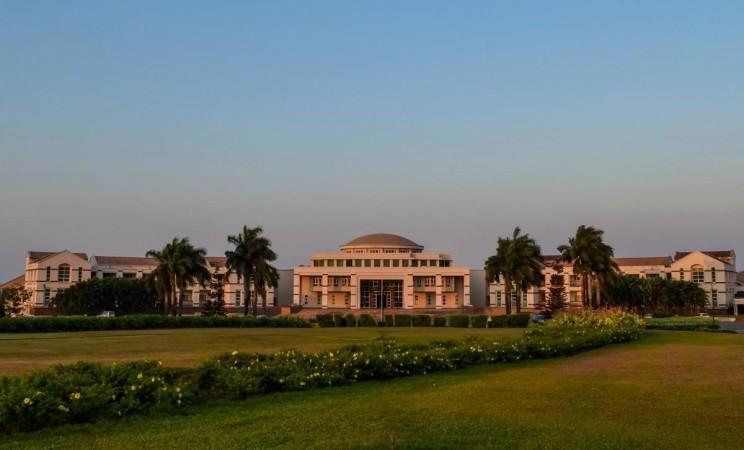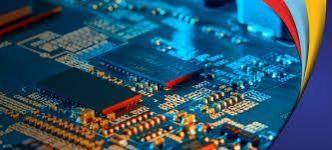
In a breakthrough that could redefine India's capabilities in advanced computing and semiconductor innovation, researchers at the Birla Institute of Technology and Science (BITS) Pilani have successfully developed the country's first indigenous in-memory computing (IMC) chip. The achievement, announced on Saturday, was made possible under the National Supercomputing Mission (NSM), a flagship program of the Department of Science and Technology (DST), Government of India. Designed entirely at BITS Pilani and fabricated at the Semiconductor Laboratory (SCL) in Chandigarh, this pioneering chip signals India's growing prowess in cutting-edge processor and memory design, positioning the country to compete in domains that have long been dominated by a handful of global technology powers.
Unlike conventional architectures that require data to shuttle back and forth between the processor and memory, a process that is energy-intensive and creates significant latency the in-memory computing paradigm embeds computational capabilities directly within the memory unit. This innovation addresses the well-known "memory wall" bottleneck, which has been a limiting factor for modern computing systems, particularly in areas such as artificial intelligence (AI), machine learning (ML), signal processing, and big data analytics. By drastically reducing the time and energy consumed in data movement, in-memory computing chips can deliver a leap in performance and efficiency. Speaking about the development, Professor S. Gurunarayanan, who guided the team alongside Professor Chandra Shekhar, former Director of the Central Electronics Engineering Research Institute (CEERI), said, "This chip has the potential to revolutionize how we approach high-performance computing. It brings computational intelligence closer to the data, which is the future of AI accelerators, defense systems, and advanced supercomputers."
The BITS Pilani team has produced two prototype versions of the chip, each addressing different computational needs. The first is a single-port memory chip capable of performing fundamental logic operations such as NAND, NOR, AND, OR, and inversion directly within the memory cell. The second, more advanced version is a dual-port memory chip designed to operate in two distinct modes: one as a conventional read/write memory unit, and the other as a specialized processing unit capable of performing multiply-accumulate (MAC) operations, which are at the heart of neural networks and many AI algorithms. The fabrication of these prototypes at SCL Chandigarh underscores the growing integration between academic institutions and national semiconductor fabrication infrastructure, a relationship crucial to building a robust and self-reliant ecosystem for chip design and manufacturing in India.

This development also marks a continuation of BITS Pilani's long and distinguished history in electronics education and research. The institution has been a pioneer in the field since the mid-20th century, with its Electrical Engineering Department tracing its origins to 1946 when it was established as part of the Birla College of Engineering. In 1955, it introduced the M.Sc.(Tech) Electronics program, which was one of the earliest of its kind in India. Recognizing the transformative potential of microelectronics, BITS launched its dedicated Microelectronics degree program in 1988–89, well ahead of many peers. This legacy has created a fertile environment for groundbreaking research, producing generations of engineers and innovators who have contributed to India's technology landscape. Professor Chandra Shekhar highlighted this lineage, stating, "Our institution has always been at the forefront of fostering innovation in electronics. Today's announcement is a testament to decades of investment in people, ideas, and infrastructure, and it positions BITS Pilani as a global player in semiconductor research."
The significance of this achievement is amplified by its alignment with the National Supercomputing Mission's broader vision. NSM, jointly driven by DST and the Ministry of Electronics and Information Technology (MeitY), aims to create a nationwide network of high-performance computing facilities powered by indigenous technologies. Over the past few years, the mission has delivered several petascale supercomputers to universities and research institutions across India, while also supporting the development of indigenous HPC components such as the "Rudra" server and the "Trinetra" high-speed interconnect. The in-memory computing chip developed by BITS Pilani represents a critical addition to this ecosystem, providing a pathway for building future supercomputers that are faster, more efficient, and less dependent on foreign hardware. By enabling computational tasks to be performed directly within memory units, these chips could drastically reduce power consumption in large-scale data centers and supercomputing clusters, a challenge faced worldwide as AI workloads grow exponentially.
This innovation also comes at a time when India is investing heavily in its semiconductor sector under the Semicon India Program and the Digital India Semiconductor Mission (DISM). Recent milestones, such as the unveiling of ISRO and SCL's Vikram 3201, a 32-bit space-grade microprocessor designed for satellites and launch vehicles, and the launch of commercial memory chip production by Sahasra Semiconductors, have collectively demonstrated India's determination to become a major player in the global semiconductor supply chain. The BITS Pilani chip adds a vital new dimension to this ecosystem, emphasizing not just manufacturing capacity but also deep design innovation, an area that has traditionally been dominated by countries like the United States, South Korea, Taiwan, and Japan.
Looking ahead, the team at BITS Pilani plans to scale up its research by enhancing the performance metrics of the prototypes, including processing speed, energy efficiency, and fault tolerance. The dual-port chip, with its multiply-accumulate functionality, is particularly promising for applications in defense, space technology, autonomous systems, and edge AI devices, where computational efficiency and reliability are critical. Industry observers note that if this technology can be commercialized at scale, it could reduce India's reliance on imported AI accelerators and processors, driving down costs while simultaneously strengthening national security and technological sovereignty. This aligns with the government's Atmanirbhar Bharat (self-reliant India) vision, which seeks to make the nation not just a consumer of advanced technology but a global hub for its creation and export.
The development of India's first indigenous in-memory computing chip is more than a scientific milestone; it is a strategic achievement that symbolizes the convergence of academia, government, and industry in pursuit of technological leadership. As AI, big data, and supercomputing continue to reshape global power dynamics, innovations like this will play a defining role in determining which nations lead the next wave of technological transformation. For BITS Pilani, this moment reaffirms its status as a crucible of innovation and positions its researchers and students at the cutting edge of a rapidly evolving field. For India, it represents a step toward a future where the country is no longer dependent on imported chips but stands as a creator and exporter of breakthrough technologies that power the world's most advanced computing systems.
















